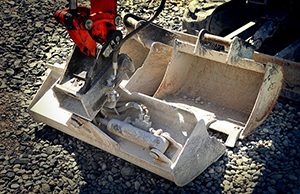 The winter months are the most dangerous for people who work outdoors. Often workers succumb to cold weather illness when working outside. However, employees in other industries have ongoing cold exposure, many of them in warm climates.
The winter months are the most dangerous for people who work outdoors. Often workers succumb to cold weather illness when working outside. However, employees in other industries have ongoing cold exposure, many of them in warm climates.
These workers include:
- Delivery People
- Postal Workers
- Maritime employees
- Food Processing Workers
- Cold storage industry
- Supermarket worker
- Tow truck operators
Cold is punishing to people and exposure to cold has many negative effects that include dehydration, frostbite, numbness, shivering, hypothermia and immersion foot disease.
What Ongoing Cold Exposure Does
Hypothermia
Continued cold exposure first affects the limbs, toes and fingers and then progresses deeper into the body tissues and the core of the body. If the core temperature of the dips below 95 degrees F, the worker has hypothermia. Hypothermia is a dangerous illness and along with frostbite is one of the two most dangerous dangers of working in a cold environment – inside or out.
Frostbite
When a person’s skin is has a severe reaction to cold frostbite can occur. Frostbite freezes the skin and makes crystals of the body fluids including blood. The chilling effect of frostbite is permanent damage to hands and feet, ears, and the nose. When frostbite is severe, the worker may have to undergo an amputation.
Other Dangerous Illnesses
Frostbite and Hypothermia are two most common, cold environment, illnesses workers get from cold exposure. Other significant cold weather injuries include:
- Cold Immersion
- Chilblains
- Trench Foot
Prevention of Cold Weather Injuries Keeping feet warm and dry is the best prevention measure against trench foot and frostbite of the foot. Boots that have insulation and are waterproof is one type of the many personal protection equipment available for cold weather injury prevention. Other measures include long johns that have insulation, cold weather outer coats, space heaters where possible and other appropriate cold climate measures.
Preventing cold weather injuries is better than treating them and having your construction company’s worker compensation rates rise. Make sure that you take all reasonable measures to prevent these types of injury.
 Do any of these sentences pop up into your head when you’re arriving at the workplace?
Do any of these sentences pop up into your head when you’re arriving at the workplace?













